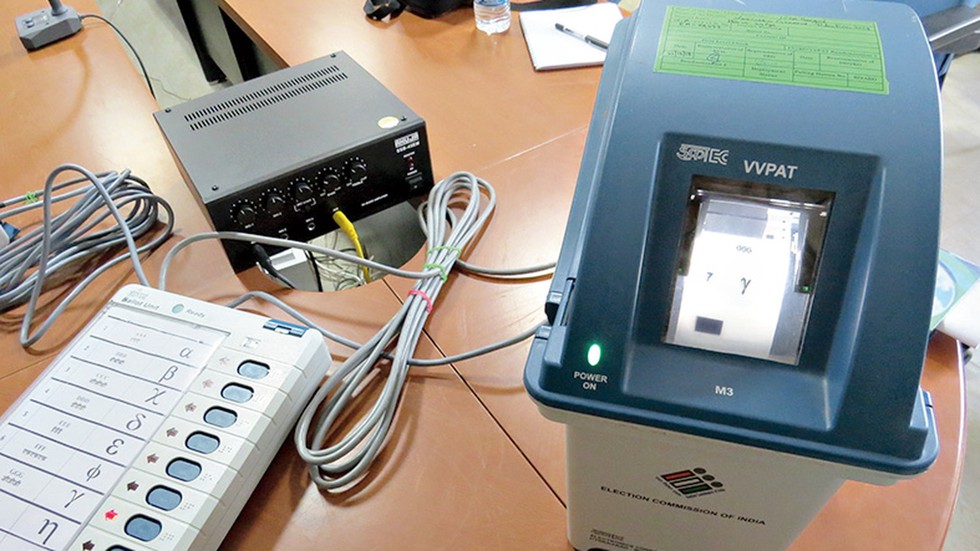The Supreme Court has recently sought responses from the Election Commission of India and the Centre regarding a plea seeking a comprehensive count of Voter Verifiable Paper Audit Trail (VVPAT) slips in elections.
Current Verification Process
Currently, only five randomly-selected Electronic Voting Machines (EVMs) undergo verification through VVPAT paper slips.
Petition and Court Proceedings
- Filed Plea: Lawyer and activist Arun Kumar Agrawal filed a plea challenging the Election Commission’s guideline of sequential verification of VVPATs.
- Representation in Court: Senior lawyer Gopal Sankaranarayanan and advocate Neha Rathi represented Agrawal in court.
- Court’s Action: A bench comprising Justices BR Gavai and Sandeep Mehta requested responses from both the election panel and the Centre regarding the plea. The matter is scheduled for a hearing on May 17.
Importance of the Issue
- Congress General Secretary’s Statement: Jairam Ramesh stressed the significance of a decision on the matter before the Lok Sabha elections, emphasizing the need to enhance public confidence in EVMs and ensure the integrity of the electoral process.
- Concerns Raised: There have been concerns raised by experts regarding VVPATs and EVMs, citing discrepancies between EVM and VVPAT vote counts reported in the past.
Voter Verifiable Paper Audit Trail (VVPAT)
VVPAT is an independent system used for verifying votes in elections. It allows voters to confirm if their vote was recorded accurately by generating a paper slip that shows their selected candidate’s name. This paper slip is securely sealed and can be used for verification in case of disputes.
Supreme Court’s Previous Directive
In April 2019, the Supreme Court directed the Election Commission to increase the number of EVMs undergoing VVPAT physical verification from one to five per assembly segment in a parliamentary constituency.
Argument of the Plea
- Feasibility of Complete Verification: The plea argues that simultaneous verification and deployment of more officers could enable complete VVPAT verification within five to six hours.
- Financial Aspect: Despite significant expenditure on VVPATs, currently, only a fraction of VVPAT slips are being verified.
Multiple Choice Questions (MCQs) with Answers:
- What is the current process of VVPAT verification in elections?
- A) Verification of all EVMs through VVPAT slips
- B) Verification of five randomly-selected EVMs through VVPAT slips
- C) Verification of one EVM per constituency through VVPAT slips
- D) No verification of VVPAT slips
- Who filed the plea challenging the Election Commission’s guideline on sequential verification of VVPATs?
- A) Gopal Sankaranarayanan
- B) Neha Rathi
- C) Arun Kumar Agrawal
- D) Jairam Ramesh
- What was the Supreme Court’s directive in April 2019 regarding VVPAT verification?
- A) Increase the number of EVMs undergoing VVPAT verification to ten per assembly segment
- B) Maintain the current process of VVPAT verification
- C) Increase the number of EVMs undergoing VVPAT verification from one to five per assembly segment
- D) Eliminate the use of VVPATs in the electoral process
- What is the purpose of VVPAT in elections?
- A) To record votes electronically
- B) To confirm if a vote was recorded accurately by generating a paper slip
- C) To eliminate the need for physical ballots
- D) To count votes manually
